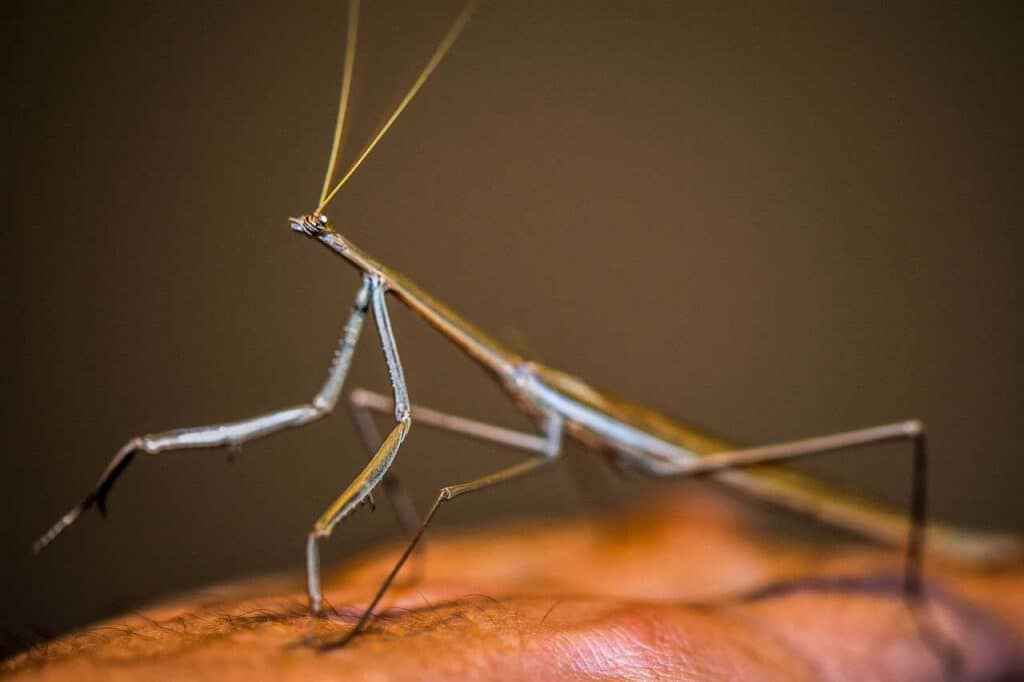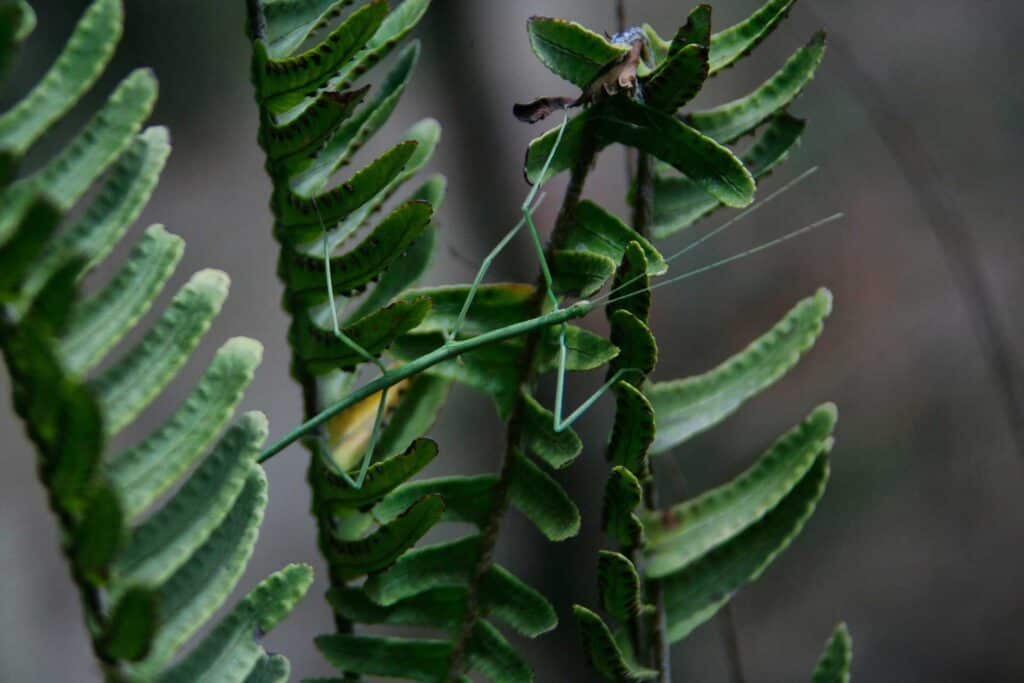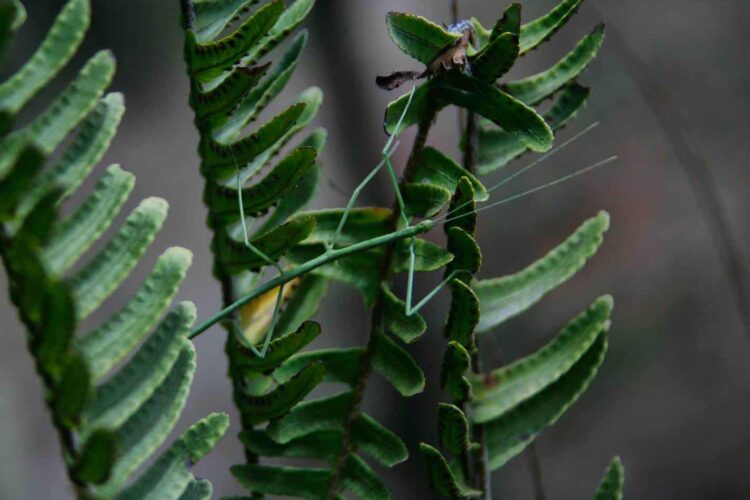Table of Contents
Your stick insects need a proper home if they are going to thrive. However, there’s no need to spend a lot of money on a stick insect cage. Indeed, it’s quite possible to make your own stick insect cage at home. There is nothing technical about it, so if you are looking for an answer to the question of how to make a stick insect cage, know that all you need are the appropriate tools and the right plan.
Nevertheless, you do have to take into account the species of stick insect you plan to house in the enclosure as each have different needs. At the end of the day, there are over 3,000 distinct types of stick insect in the world, and each will have unique requirements.
So without further ado, we are going to explain you how you can easily make a stick insect cage at home.
For more advice and information on keeping and looking after stick insects, check out my ebook on Amazon click here
(opens in a new tab).

How to Make a Stick Insect Cage with Size in Mind
Size is the most important factor in creating a stick insect enclosure conducive to their health. This is why you need to research as much as you can about your stick insect species.
The problem is not really due to movement. Obviously, the more space they have the better. The real issue is that stick insects need a certain amount of height available to them to shed their skin.
Let’s explain:
When stick insects shed their skin, or moult, they are removing their outer layer. This type of insect will moult for most of their lives, being classed as subadults for most of this time. Upon becoming full adults, the last and final stage is death, which takes place in most stick insect species a few months after the final moult.
The method of moulting is for the stick insect to climb toward the top of the enclosure, probably on the highest branch/stem/object and then hang upside down to shed their skin . The shedding process actually requires a lot more vertical space than you might think.
. The shedding process actually requires a lot more vertical space than you might think.
For example, the common Indian stick insect needs a minimum of 18 inches of height to moult comfortably and without any complications. Naturally, this measurement will differ depending on the size of your insect.

Do You Need to Consider the Conditions?
It goes without saying that you’re not going to have an overcrowded cage. This can lead to fungal infections, which are the single greatest threat to your pet’s survival. Overcrowding creates the perfect breeding ground in your cage for fungal infections. If you have an unhealthy colony, this is the most probable reason why.
Nonetheless, another condition that can affect the health of your stick insects is the ambient temperature of the enclosure.
Every stick insect species has its own preferred temperature, as well a corresponding level of humidity. This makes sense because if you think about it, stick insects come from a variety of places around the world. Moreover, today we can import exotic species from all over and find them in any local pet store.
The problem, though, is that most people forget, or are ignorant of, the fact that that the insects are not necessarily native to where they are now. Therefore, they need the right conditions to both moult and to avoid growing too quickly (this issue has been discussed in depth elsewhere on our website).
In summary though, the largest obstacle with temperature control is potential over-development of the insect. Why is this important? Well, according to one essay on insect development due to temperature , higher than normal temperatures result in insects growing and developing at a faster rate than normal. This then obviously speeds up their natural cycle, which also cuts their life cycle short.
, higher than normal temperatures result in insects growing and developing at a faster rate than normal. This then obviously speeds up their natural cycle, which also cuts their life cycle short.
This might be one of the reasons your stick insects do not seem to be living for long. Or are you noticing that your stick insects are not having the easiest time shedding?
This could be because the temperature isn’t high enough. So when looking at how to make a stick insect cage, consider adding a heat mat and/or a heat bulb to better replicate the insect’s natural environment.
You’ll both be happier for it!

Getting Your Supplies
Now you need to start thinking about the different supplies you will need to actually build your stick insect cage. Let’s take a look at some of the most important items you can select from:
Glass Tanks – The most common choice for new stick insect owners is the glass tank. These are relatively inexpensive and easy to find. Some insects will thrive in glass tanks, but stick insects generally need objects within the enclosure to climb on (branches, sticks, etc.). Most species will have a hard time in a glass enclosure without anything to climb on.
Insect Netting – Insect netting is a relatively new concept. This fine netting is good for insects like stick insects as the walls of the enclosure are made entirely of netting, which allows them to climb easily. Alternatively, this material can be used to make a cover over glass enclosure walls, again allowing for easy climbing.
As a quick fix, you could even use some mosquito nets. These are fine enough for stick insects to climb on.
Plastic Food Wrap – Here’s another quick fix to one of the most common problems experienced by stick insect owners. Plastic food wrap is surprisingly good at trapping humidity in with the insect. For some of the larger species, wrap this around the whole enclosure, obviously making some ventilation holes.
You don’t have to cover every side of the cage though. This is where your research will come into its own – deciding how much humidity your species of stick insect needs.
Plexiglass – The plexiglass option offers a solid, heavyweight piece of material that costs a bit of money but will last you a lifetime. This material doesn’t shatter, and it also allows for a high level of humidity within the enclosure. As mentioned though, this option is not the cheapest and you need to be willing to spend a little if you want a plexiglass enclosure.
Wood – Wood is another type of material for creating the perfect cage. Good old wood is still the best option for the frame of the cage. We don’t have any specific recommendations for wood type. All you have to do is make sure it’s sturdy.
How to Make a Stick Insect Cage for Real
Now that you have an idea of some of the things your stick insect needs, and you’ve already managed to pick out some of your supplies, it’s time to start building your stick insect cage.
In reality, this is the simplest part of all. There are no special requirements other than to size it correctly. But as you have already done your research into what your stick insect’s requirements are, this should not be a problem.
Resources like Craftsman Space will show you the technicalities of hammering together the wood and nails from start to finish, so take a look.
will show you the technicalities of hammering together the wood and nails from start to finish, so take a look.
Should I Buy an Enclosure Instead?
If you are pressed for time, or you simply do not have the technical expertise necessary to build a basic box, you can purchase an enclosure from most pet supply stores.
Just make sure, as mentioned a couple of times already within this guide, that it is suitable for your particular stick insect species. So once again, the main considerations for any enclosure are:
- Size/area
- humidity
- vertical space to climb.
Do not just buy any old enclosure as it may not provide the best conditions for your pet. For your convenience, here is a selection of appropriate enclosures available at Amazon (the link opens in a new tab).
Giving Your Stick Insect the Best Quality of Life
The key to giving your stick insect the best quality of life is to know what it needs as a species. Although stick insects are some of the most low maintenance pets around, it still pays to do a little research on the particular type of species you intend to acquire.
Take the time to understand the basics of your species and you can put together an enclosure for your new pet in a single afternoon. It’s just a matter of being attentive to their needs.
Below I have found some videos on YouTube that might help you out. Enjoy:

